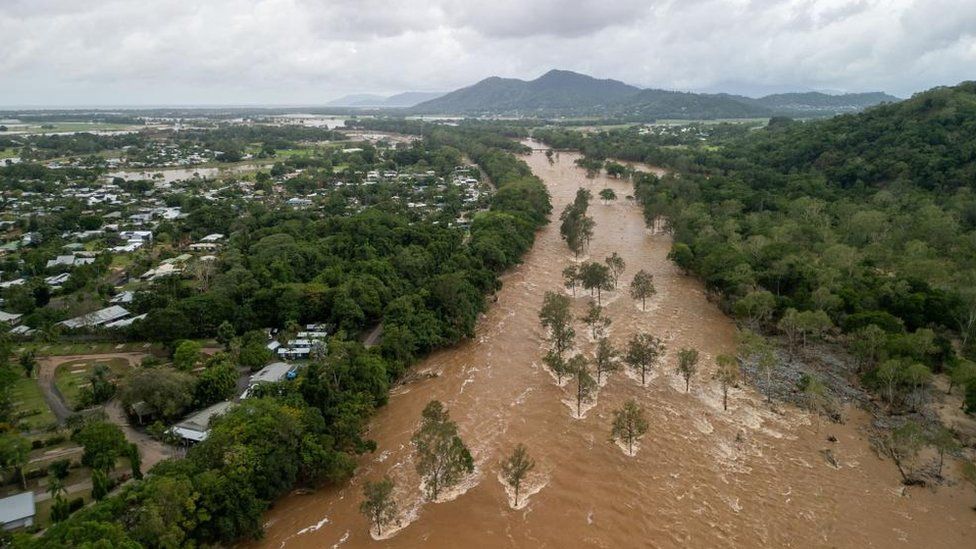ARTICLE AD BOX
 Image source, EPA
Image source, EPA
Areas around Cairns have received more than 2m (7ft) of rainfall since Thursday
By Tiffanie Turnbull
BBC News, Sydney
Major flooding in northern Australia has begun to ease but many towns remain isolated in crocodile-infested waters as supplies dwindle.
Extreme weather driven by ex-tropical cyclone Jasper has dumped a year's worth of rain on parts of Queensland.
Some rivers have swollen to record levels, flooding homes, severing roads and power, and forcing people to flee houses in boats. One man is missing.
Hundreds of people still require rescue, many in remote communities.
Queensland authorities say the rain has become less intense, and river levels have begun to fall.
Rescue and relief efforts have been hampered by the closure of Cairns Airport, where planes were pictured submerged on Sunday.
Many communities between Cooktown and Innisfail remain cut off by floodwaters, and food and water stocks are running low.
Of primary concern is Wujal Wujal, where up to 300 people are waiting to be evacuated.
Former mayor Desmond Tayley told the Australian Broadcasting Corporation he had "grave concerns" for the elderly and people with disabilities in the small community.
With no electricity and supplies almost gone, "desperate" locals had been traversing floodwaters where large crocodiles had been seen, he said.
"A lot of people risk their lives to get to and from different places within the community... We've got big crocs close to 6m. Being attacked by one of those, you never see someone again."
Watch: Crocodile and wallaby captured as planes submerged in Australia floods
Bad weather forced an evacuation attempt to be abandoned on Monday, but authorities said they had now reached the town and were beginning to get the elderly and vulnerable out.
A search is under way in a separate community for the missing man, 85, who was last seen late on Sunday.
State officials have promised essential supplies including medicine are being urgently flown to towns across the region.
Many locals were taken by surprise at the extent of the downpour, with some saying they were not properly warned.
But state Premier Steven Miles says the Bureau of Meteorology's weather tracking systems could not have predicted the scale of a disaster.
"There's a lot about this weather event that is unusual and has never been seen before," he told reporters.
"There'll probably be at some point in the future where we can talk about what's driving those kinds of changes in weather patterns."
In recent years, Australia has been plagued by disasters including severe droughts and bushfires, successive years of record floods, and six mass bleaching events on the Great Barrier Reef - increasing concerns about the impacts of climate change.
State authorities estimate the cost of this latest disaster will top A$1bn (£529m; $670m).

 1 year ago
52
1 year ago
52








 English (US) ·
English (US) ·